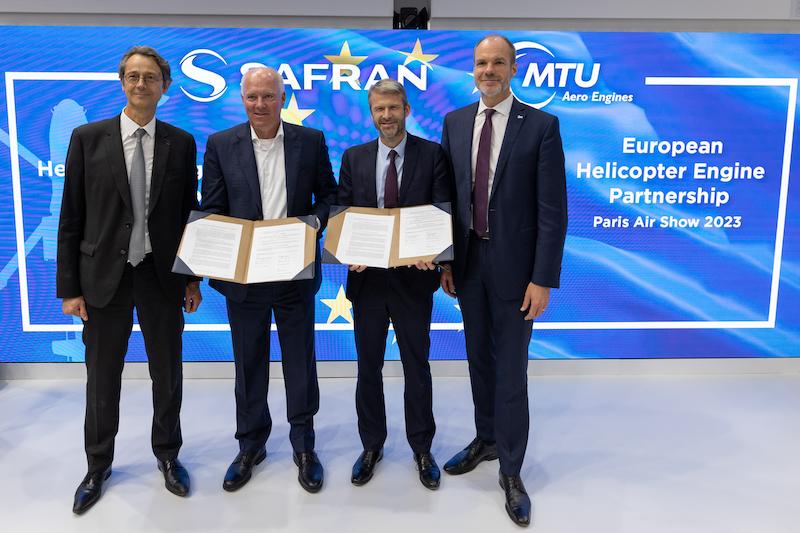LE BOURGET, June 20, 2023
Safran and MTU will form a 50-50 joint venture (JV) to develop an engine for a next-generation European military transport helicopter, the companies revealed June 20.
Working under the European Defence Fund-supported EU Next-Generation Rotorcraft Technologies (ENGRT) project, the companies will shape their program to yet-to-be-determined customer requirements for a helicopter tentatively slated to enter service by 2040.
The announcement was made at the Paris Air Show.
The as-yet-unnamed JV, expected to be finalised within months, will be modelled after a similar tie-up between the two, christened the European Military Engine Team (EUMET), developing an engine for Europe’s Future Combat Air System’s (FCAS) Next-Generation Fighter (NGF).
“We are convinced that the European armed forces need a 100%-European helicopter engine,” Safran Helicopter Engines CEO Cédric Goubet said. “It’s a matter of sovereignty. It’s a matter of strategic autonomy.”
The venture is prepared to meet customer demands on everything from engine power to performance specifications.

“We are ready to develop a very powerful engine,” Goubet said, adding that could mean up to 6,000 shp “if need be” to meet range, payload and speed requirements.
MTU Chief Program Officer Michael Schreyögg said the engine’s design could be driven by other “interesting” aspects based on their needs. Customers may not prioritise traditional requirements such as speed, weight and fuel consumption.
“Maybe there is also requirements to have the best cost available, the best maintenance cost available … and make a compromise on fuel efficiency. This is something we want to work out and want to find out from the customer base,” Schreyögg said.
The company said a range of technologies, including hybrid-electric propulsion and 3D printing, would be explored.
Neither executive would commit to a development timeline, but acknowledged the engine needs to be mature before it enters service. They said the first engine’s test will not occur before 2030.
Schreyögg suggested each company’s core competencies would carry over into the project.
“Safran is definitely the leader in turbines and in the hot section,” he said. “MTU is quite good in terms of competence on the compressor side. So if you split the engine somewhere in the middle and say left is MTU, right is Safran, you’re not way off.”
Other partners are expected to join the effort. The JV would remain unchanged and form alliances with new, European contributors.
The €40 million ($43.7 million) ENGRT effort, led by Airbus and Leonardo with support from industry in 12 European Union countries, aims to produce a military rotorcraft technology road map, as well as strategies for modularity and manufacturing, life cycle analysis and maintenance concepts. ENGRT was developed to explore a European answer to NATO’s Next Generation Rotorcraft (NGRC) project to replace hundreds of medium rotorcraft in service with European militaries.
The new helicopter engine could be Europe’s response to the GE Aerospace T901, a 3,000-shp engine being developed to power the U.S. Army’s Future Attack Reconnaissance Aircraft and re-engine the AH-64 and UH-60. The NGRC will replace aircraft such as the NH-90 and UH-60.
Visit: www.safran-group.com
